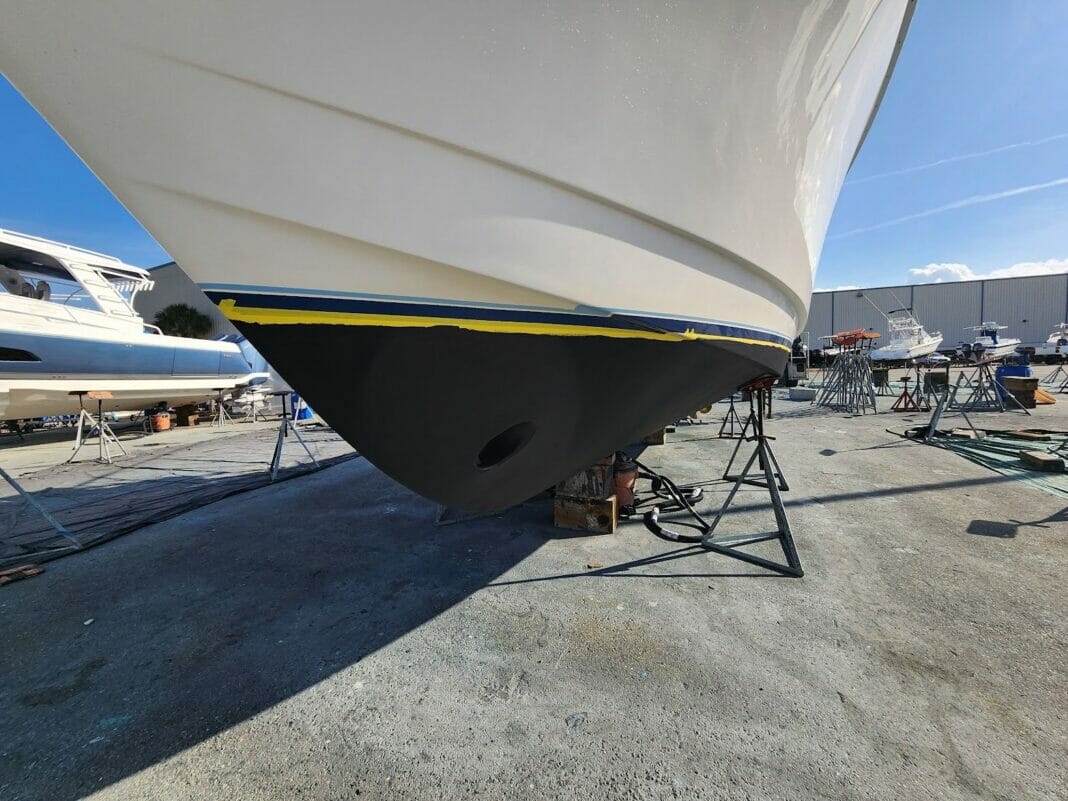If you own a boat, you’ve likely heard of “fouling,” which refers to the accumulation of unwanted growth, like algae, barnacles, and other marine organisms on its hull below the waterline. This build-up not only makes your boat look unsightly but can also affect its performance, fuel efficiency, speed, and, in extreme cases, even cause damage to the vessel. Anti-fouling paints, which actively prevent or slow down this process, help keep your boat clean and in top shape. This article will introduce you to anti-fouling paints, explain how they work and provide guidelines for selecting and applying the right one for your boat.
The Importance of Anti-fouling Paints
Fouling can lead to various problems for your vessel. Some of these issues include:
1. Reduced performance: Bio-fouling increases drag, making it more difficult for your boat to move through the water. As a result, your boat’s top speed is reduced, and it may take longer to reach your destination.
2. Increased fuel consumption: Bio-fouling can also affect fuel efficiency. Increased drag forces the engine to consume more fuel to maintain speed, leading to higher operating costs.
3. Structural damage: Marine organisms can damage the hull’s material by burrowing into it or corroding its protective layer, leading to costly repairs.
4. Environmental impact: Many invasive marine organisms travel by attaching to the hulls of ships and boats. Anti-fouling paint can help prevent the transfer of these species from one body of water to another.
Given these risks, it makes sense to use anti-fouling paints to protect your boat, save money, and preserve the marine environment.
Types of Anti-fouling Paints
There are two primary types of anti-fouling paints: hard and self-polishing copolymer (SPC).
Hard Anti-fouling Paints
Hard anti-fouling paints, also known as contact leaching paints, create a tough, durable coating on the boat’s hull. They release chemicals or biocides at a controlled rate to deter marine growth.
Pros:
- Long-lasting and durable
- Can be sanded or burnished for racing or high-performance applications
- Withstands extended periods out of the water when the boat is in dry dock or on a trailer
Cons:
- Can lose effectiveness over time as the chemicals are depleted
- May require more frequent application due to their constant biocide release
Self-Polishing Copolymer (SPC) Anti-fouling Paints
SPC paints provide a smoother finish than hard paints, and their biocides are released more slowly. These paints have a chemical structure that allows them to wear away gradually, exposing fresh layers of biocide-loaded paint beneath.
Pros:
- Consistently smooth hull finish
- Extended longevity due to controlled biocide release
- Improved fuel efficiency and performance as fouling is effectively reduced
Cons:
- Less durable than hard paints, and not suitable for boats that spend extended periods out of water
- More expensive than hard anti-fouling paints
Selecting the Right Anti-fouling Paint for Your Boat
When choosing an anti-fouling paint, consider the following factors:
1. Type of boat: Different boat types, such as sailboats, powerboats, or racing boats, may require specific anti-fouling paint formulations. Check the manufacturer’s recommendations for your specific boat type.
2. Water type: Saltwater and freshwater have different fouling organisms, necessitating different paint formulations. Pure freshwater boats may require different anti-fouling paint than those operating in saltwater or brackish environments.
3. Boat usage pattern: Consider how frequently you use your boat and how long it spends in and out of the water. If your boat typically stays in the water for extended periods, SPC paints may be a better choice due to their controlled biocide release.
4. Local regulations: Some areas have specific regulations regarding anti-fouling paints, primarily concerning copper-based biocides. Be sure to familiarize yourself with these regulations and choose a paint that complies with them.
Applying Anti-fouling Paint
Before applying anti-fouling paint, prepare the surface of your boat’s hull by removing any existing anti-fouling paint and other contaminants. Once the surface is clean and smooth, follow these steps:
1. Apply a primer coat: A primer helps the anti-fouling paint adhere better to your boat’s hull. Choose a primer that is compatible with your chosen anti-fouling paint and apply as per the manufacturer’s instructions.
2. Apply the anti-fouling paint: Mix the paint thoroughly and apply it to the cleaned and primed surface using a roller or brush. Apply at least two coats, allowing each coat to dry before applying the next. Follow the manufacturer’s guidelines for drying and over coating times.
3. Allow the paint to cure: Give the paint ample time to cure according to the manufacturer’s recommendations before launching your boat.
By selecting and applying the right anti-fouling paint, you can protect your boat from unwanted marine growth and ensure optimal performance, fuel efficiency, and longevity.


